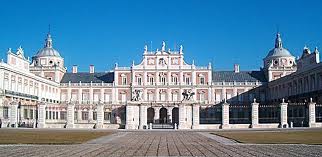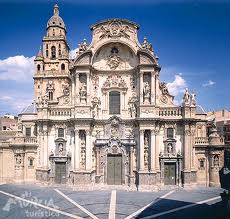Late Baroque Architecture
The second half of the XVIII century in Spain was dominated by the presence of an enlightened king in the person of Charles III and his attempts to bring modernity to a country that was still largely mired in the precariousness of the previous century. Through his influence, the artistic tendencies in the country were tainted with the latest developments in Italy, where the excesses of the French Rococo were being counter balanced with classicist elements in the latest architecture.

But all through the reign of his father, Philip V, several tendencies had taken shape in the artistic panorama in the country, and consequently the second half of the XVIII century saw the development of parallel lines in the architectural landscape.
On the one hand, there was the continued impregnation of the Italian style, imported together with the Bourbon monarchs, which can be traced to Philip V's reign. For instance, Teodoro Ardemans had been instructed by the king to build a small palace in the vicinity of Segovia, reduced in size but with great gardens. The result was the eminently Baroque Granja de San Ildefonso.
In charge of carrying out further work in the Palace of Aranjuez as well, Ardemans passed away while at it in 1726. The palace was left untouched until the arrival of Ferdinand VI, under whose patronage it was practically finished. The work this time was carried out by the Italian architect Santiago Bonavía.
The artistic panorama in Spain at the time can be perfectly illustrated by Bonavía's work: while at the service of the king and completing the Palace of Aranjuez he maintained the classical elements prevalent in the previous layout, using Baroque techniques sparingly and granting the complex certain serenity, despite the grandeur of the setting.
Nevertheless, when Bonavía embarked on other projects, such as the previous design of St. Michael's Pontificate Basilica, he allowed his detailed knowledge of the fancy tricks of the Baroque take charge and he created a unique building which stands out not only for its convex facade, a typical characteristic of the Rococo, but also for the expert treatment of space and light inside the church.
Going back to the Palace of Aranjuez, however, once Charles III came to power, he sought to extend the building and ordered Francesco Sabatini to design additional wings. Sabatini's proposals, much like his previous work in the Royal Palace in Madrid and the gardens that still today bear his name, greatly evidence the slow return to a classicist aesthetic by toning down naturalist lines to a minimum, only using baroque elements in the occasional break of the straight line and in certain ornaments.

However, the progress of artistic tendencies is hardly ever linear, coherent and uniform, and, consequently, we still find in Spain at the time very many examples of buildings and architects who pushed the opposite end of the spectrum to the limit. One such instance is the work of Jaime Bort, primarily renowned for his design of the new facade of the Cathedral of Murcia.
Bort's creation is a bonanza of late Baroque tropes taken to the limits of their structural role and exploited in a playful interaction with the viewer, who is confronted with a plethora of half-finished lines and shapes with a predominant use of shell-like spaces and composite columns that give the whole an air of both compactness and exuberance.
Similarly, the work of the Tomé brothers, Narciso and Diego, displays the ornamental richness that since the early days of the Gothic has been so popular among Spanish artists and that still today can be seen by visitors.
Famous particularly for their collaboration in the carving of the facade of the University of Valladolid, this building, slightly earlier than Murcia Cathedral, confirms the theory that towards the middle of the XVIII century Spanish sensibility was stile very much split between the reemerging classicist tendencies of a Sabatini, for instance, and the extravagant richness of the Rococo.
